In review: insolvency law, policy and procedure in Luxembourg
All questions
Insolvency law, policy and procedure
Insolvency proceedings in Luxembourg are governed by the following legislation.
General insolvency regime
00001.The Law of 14 April 1886 on composition with creditors, as amended;
00002.the Grand Ducal Regulation of 24 May 1935 on controlled management;
00003.the Code of Commerce, which deals more specifically with stays of payments and bankruptcy proceedings;
00004.Council Regulation (EC) No. 848/2015 of 20 May 2015 on insolvency proceedings;2
00005.the Law of 28 October 2022 on administrative dissolution without liquidation procedure; and
00006.the Law of 7 August 2023 on business preservation and modernisation of bankruptcy law implementing Directive EU 2019/1023 of the European Parliament and of the Council of 20 June 2019 on preventive restructuring frameworks, on discharge of debt and disqualifications, and on measures to increase the efficiency of procedures concerning restructuring, insolvency and discharge of debt, and amending Directive (EU) 2017/1132 (Restructuring Directive).
It should be noted that the Law of 14 April 1886 on composition with creditors, as amended and the Grand Ducal Regulation of 24 May 1935 on controlled management will be repealed by the entry into force of the law on business preservation and modernisation of bankruptcy law, while remaining applicable to current proceedings of compositions with creditors, controlled management and stay of payments.
Main special insolvency regimes
00001.Banks and professionals of the financial sector: the Law of 18 December 2015 on resolution, recovery and liquidation measures of credit institutions and some investment firms, on deposit guarantee schemes and indemnification of investors;
00002.insurance and reinsurance companies and pension funds: the Law of 7 December 2015 on the insurance sector, as amended;
00003.regulated investment funds and fund managers:
·the Law of 17 December 2010 relating to undertakings for collective investment (UCIs), as amended;
·the Law of 13 February 2007 on specialised investment funds, as amended;
·the Law of 15 June 2004 on the investment company in risk capital (SICAR), as amended;
·the Law of 23 July 2016 on reserved alternative investment funds (RAIF); and
·the Law of 12 July 2013 on alternative investment fund managers; and
00004.regulated securitisation entities: Law of 22 March 2004 on securitisation, as amended.
The insolvency procedures provided for under Luxembourg law may be divided into those intended to preserve the business of the debtor (i.e., stay of payments, controlled management and composition with creditors) and procedures intended to wind up and realise the assets of the debtor (i.e., bankruptcy and compulsory liquidation).3
Each procedure is further analysed under Sections I.iii and III.vi, with the substantive provisions of Luxembourg insolvency law relating thereto.
ii Policy
Subject to the development of the New Insolvency Law, Luxembourg insolvency law provides for three specific reorganisation procedures, which are essentially designed to keep failing businesses operating and to facilitate their restructuring into proper going concerns; however, in practice, there have been few cases of these procedures being opened. For instance, there have been 44 cases of controlled management in the past 20 years (2003–2023), 13 of which ended up in formal bankruptcy proceedings.4 Nor have there been any cases of composition with creditors or stays of payments (relating to general commercial or holding companies) during this time.5
There are many reasons for this situation, although it may be more a case of inadequacy of the available instruments for restructuring distressed businesses than the authorities' willingness to favour bankruptcy and liquidation procedures over reorganisation measures. One of the obstacles to resorting to reorganisation procedures is the requirement generally expressed by the Luxembourg courts that, at the time of the opening of the reorganisation proceedings, the distressed business should still have sufficient assets to settle the estimated costs of the restructuring process, which is not always realistic. The formal conditions for allowing procedures such as compositions with creditors are also too restrictive, as – for example – the approval of a majority (in number) of the creditors representing at least three-quarters of the debts (i.e., a fairly high threshold) is mandatory.
Importantly, courts are also entitled to verify at any time during the processing of a request for controlled management proceedings, or during the course of the reorganisation itself, whether the conditions for opening formal bankruptcy proceedings are met and, under such circumstances, to declare the debtor bankrupt ex officio.6 Finally, a business in whose name acts of gross negligence or fraud have been committed would typically be denied the benefit of reorganisation measures.7
The Luxembourg courts have so far dealt with more formal bankruptcy (i.e., liquidation) proceedings than reorganisation measures, but a change is due in short order.
A significant number of bankruptcies (1,173 cases in 2021, 1,050 bankruptcies in 2022 and 287 cases in the first three months of 2023),8 and the general public acknowledgement of a shortage of appropriate instruments to deal with companies experiencing financial difficulties, has led the government to act and propose an ambitious reform of Luxembourg insolvency law under which 'efforts will be made to favour reorganisations over liquidation'.
It should also be noted that any commercial company that is in cessation of payments (i.e., unpaid debts of the debtor are certain, liquid, due and payable) must make a bankruptcy filing within one month. Therefore, the number of bankruptcies in 2020, a year heavily marked by the covid-19 pandemic, was likely affected by this measure. This same measure continued to apply throughout 2021 and saw approximately 1,173 bankruptcies. The year 2022 saw 1,050 bankruptcies, down on 2021 but concealing a sharp increase in the fourth quarter with 388 bankruptcies declared, a record level for a final quarter.9
The proposed change of policy was debated by the Chamber of Deputies in February 2011, where it was expressed that 'in a period of crisis, the creation of appropriate instruments to deal with businesses facing financial difficulties became a matter of national priority that could not be overlooked'.10
To date, the government's work on this matter has resulted in Draft Bill No. 6539 on business preservation and modernisation of bankruptcy law, dated 26 February 2013. However, this project was later converted in the wake of the 2019 EU Directive on preventive restructuring frameworks.11 The previous project, No. 6539, has now been split into two draft bills, No. 6539A and 6539B, the latter being an anti 'ghost company' toolbox, which subsequently became the law of 28 October 2022, creating the procedure for administrative dissolution without liquidation, and the former being the true successor in spirit and content of draft bill No. 6539 adapting the old project to the requirements of EU Directive 2019/1023. On 7 June 2023, the Luxembourg Business Registers published a circular indicating that companies whose bankruptcy proceedings have been closed after the entry into force of the law of 28 October 2022 (i.e., 1 February 2023) will be struck off automatically by the Luxembourg Trade and Companies Register administrator. The purpose of this measure is justified by the fact that companies whose bankruptcy was closed very rarely resume activity following this closure.
The Restructuring Directive entered into force on 16 July 2019, the main aim of which is the harmonisation of the laws and procedures of EU Member States concerning preventive restructuring, insolvency and the discharge of debt. It also intends to contribute to the proper functioning of the internal market and remove obstacles to the exercise of fundamental freedoms, such as the free movement of capital and freedom of establishment, which result from differences between national law and procedures concerning preventive restructuring insolvency, discharge of debt and disqualifications. Member States had two years to adopt the proposed rescue tools into their own laws.
Bill of law No. 6539A, which implements the Restructuring Directive, was finally voted on by the Luxembourg Parliament on 19 July 2023 and published to the Luxembourg official journal on 18 August 2023 (New Insolvency Law). It shall enter into force on 1 November 2023).
iii Insolvency proceduresMain proceedings
The procedures available in Luxembourg under the general insolvency regime are as follows:
00001.compositions with creditors;
00002.controlled management proceedings;
00003.stays of payments (which all fall within the category of reorganisation procedures (i.e., with the aim of restructuring a business experiencing financial difficulties rather than winding it up)); and
00004.bankruptcy proceedings, which essentially involve a liquidation procedure (i.e., a procedure involving the realisation of the assets of the debtor with a view to settling the debtor's liabilities either in full or, if there are insufficient assets, in part).
All the foregoing insolvency procedures are judicial procedures, which means that they are all subject to the control of the district court of competent jurisdiction.
It should be noted that the procedures of compositions with creditors, controlled management and stay of payments will no longer exist, except for ongoing procedures, as from the entry into force of the New Insolvency Law.
Compositions with creditors
A company against which bankruptcy proceedings have been initiated may avoid a declaration of bankruptcy through the approval by the district court of a voluntary arrangement between the debtor and its creditors. Once approved, the voluntary arrangement is binding upon all creditors but will only be applied to the commitments made before the arrangement.
Controlled management
A company that is not bankrupt may request that a controlled management procedure be initiated, under which the management of the company is placed under the control of one or more commissioners designated by the court. The aim of an application for controlled management is to allow either a reorganisation or an orderly winding up of a company. Creditors are asked to vote on a reorganisation or liquidation plan, which, if approved, is enforceable against all creditors. Finally, creditors' enforcement rights are suspended for the duration of the controlled management.
Stay of payments
A stay of payments may be granted when a company is suffering temporary liquidity problems, preventing them from settling their due and payable liabilities.12 As in the case of controlled management, the board of directors (or relevant management body) of the debtor stays in place during the proceedings but acts under the supervision of a commissioner. Creditors' rights are suspended for the duration of a stay of payments.
Bankruptcy
Bankruptcy proceedings are governed by Article 437 et seq. of the Luxembourg Code of Commerce and result in the winding up of a company in relation to which proceedings have been opened and the recovery of value from its underlying business or assets (if any).
Once bankruptcy proceedings have been opened, the members of the board of directors (or relevant management body) are discharged from their duties and replaced by one or more court-appointed receivers, who administer and realise the debtor's assets and then distribute the proceeds to the creditors according to the order of priority provided for by law. All enforcement actions carried out by unsecured creditors are suspended.
Beneficiaries of in rem security over assets of the bankrupt company, which are governed by the Law of 5 August 2005 on financial collateral arrangements,13 may enforce their rights despite the existence of the bankruptcy proceedings.
Certain 'abnormal' transactions (e.g., payments of non-matured debts or transfers of assets for no actual consideration) entered into by the company will be declared null and void if they have been performed during the hardening period, which starts at the moment when the company is presumed to have ceased paying its creditors, or during the 10 days prior to the hardening period.14 The starting point of the hardening period may at the earliest be set at a date six months prior to the bankruptcy judgment.15
Agreements entered into by the debtor are not automatically terminated, except those contracted intuitu personae with regard to the debtor and those including a clause of early termination upon insolvency.
Luxembourg law does not set out any mandatory timing in respect of the liquidation of a bankrupt company, which typically takes between several months and several years, depending on the size and complexity of the business.
Ancillary proceedings
Ancillary or secondary proceedings may be opened in Luxembourg in the event that main insolvency proceedings are pending in another EU Member State, subject to the provisions of Council Regulation (EC) No. 848/2015 on insolvency proceedings. These proceedings will be restricted to the assets of the debtor located in Luxembourg.16
In main insolvency proceedings opened in a foreign non-EU jurisdiction with respect to a Luxembourg company, Luxembourg courts would, in principle, not agree to open ancillary proceedings in Luxembourg based on the 'unity and universality of the bankruptcy' principle resulting from case law, according to which the main effects of the foreign bankruptcy will automatically apply to the debtor.17 To give effect to the enforcement measures contained in the foreign judgment in relation to assets located in Luxembourg, however, recognition (exequatur) proceedings will be necessary in Luxembourg.18
iv Starting proceedings
Since composition proceedings and stays of payments (under the general insolvency regime) have hardly ever been used in Luxembourg, this section is limited to an analysis of controlled management and bankruptcy proceedings.
Controlled management
Controlled management may only be applied for by the debtor and will be granted if the district court of competent jurisdiction deems that:
00001.the credit of the debtor is undermined;
00002.the settlement in full of the debtor's liabilities is in jeopardy; and
00003.controlled management allows the recovery of the debtor's business or improves the position of the debtor in respect of the sale of its assets.19
Case law considers that a debtor must also act in good faith when making a request for an order of controlled management.20
Bankruptcy
A commercial company is considered bankrupt if:
00001.it can no longer pay its debts as they fall due; and
00002.it can no longer raise credit.21
These two conditions must be met cumulatively. A company may only be declared bankrupt by the district court of competent jurisdiction. The decision can be taken on the petition of the company itself, one or more creditors (with respect to a due and payable claim for which a judgment has been notified to the debtor) or the district court on its own initiative.22 Most bankruptcy decisions are taken upon petition of creditors, which, in 90 per cent of cases, are public authorities.23
Companies that meet the above-stated criteria must file for bankruptcy within one month of the cessation of payments.24 Failure to do so will create a criminal liability risk for the board of directors (or relevant management body). If the court deems that a bankruptcy situation exists, it will declare the company bankrupt and appoint a receiver who will, inter alia, manage the affairs of the company in bankruptcy and represent the interests of the creditors of the company, generally.
v Control of insolvency proceedings
This section is limited to an analysis of controlled management and bankruptcy proceedings, given the limited number of compositions with creditors and stays of payments.
Controlled management
As with composition proceedings, the court will delegate one of its judges to examine a debtor's affairs and determine whether there are realistic prospects for a reorganisation. If, after having reviewed the delegated judge's report, the court comes to the conclusion that reorganisation is possible, it will grant the application for controlled management.25
The court will then appoint one or more commissioners, who do not replace the company's management body but supervise its actions. The members of such a body therefore continue to manage the company with a view to reorganising its affairs, subject to certain acts that may not be undertaken without the consent of the commissioners. After having heard the creditors and reviewed the debtor's situation, the commissioners will draw up their report, which will contain either a reorganisation plan or a liquidation plan. Creditors will then be convened to vote on the proposal, with the majority (in number) of creditors representing more than half of the debtor's aggregate debts. The approved plan will finally need to be sanctioned by the district court.
Bankruptcy
The receiver appointed by the district court, having opened the bankruptcy proceedings, must manage the company in good faith during the proceedings under the supervision of a supervisory judge designated by the same court. The board of directors (or relevant management body) may no longer act on behalf of the bankrupt company as of the date of the bankruptcy judgment and it therefore plays no active role in the administration of the bankruptcy, but the members of the management body are still obliged to assist the receiver whenever necessary.
Certain actions taken by the receiver will be subject to the approval of either the supervisory judge or the district court. The receiver may, for instance, proceed to the sale of movable or perishable assets of the debtor only with the prior authorisation of the supervisory judge in charge of the bankruptcy. The sale of other assets (non-perishable and immovable) requires the approval of the district court, which will determine the conditions for such a sale following a report by the supervisory judge and a hearing with the debtor.26 Finally, after all proceeds of the assets of the bankrupt company have been distributed among the creditors, the receiver will submit a detailed report about the bankruptcy proceedings to the district court.
vi Special regimes
The main special insolvency regimes under Luxembourg law are listed in Section I. The key differences between the general and special insolvency regimes are that creditworthiness issues are sufficient for opening proceedings under the special regimes and the courts have more freedom under the special regime than the general regime to determine the terms of the reorganisation or liquidation.
No special insolvency rules apply to corporate groups.27
Banks and financial sector professionals
Two separate insolvency procedures are provided for under the Law of 18 December 2015, which may apply to credit institutions and professionals within the financial sector:
00001.the stay of payments procedure, which will apply in the event that the creditworthiness of the relevant entity is impaired (whether or not it has ceased its payments) and has the aim of helping the entity to restore its financial situation by suspending all the payments due to its creditors; and
00002.the judicial liquidation procedure, which will be applied in the event it becomes apparent that the stay of payments procedure did not restore the relevant entity's financial situation or when the entity is undermined to such an extent that it may no longer meet its commitments.28
Stay of payments
A stay of payments, which may be viewed as an observation phase prior to the commencement of formal liquidation proceedings, may only be applied for by the national financial sector regulator, the CSSF,29 or by the relevant entity itself. This request will automatically result in the suspension of all payments by the entity and a prohibition on the entity taking any action without CSSF consent, with the exception of safeguarding measures.
If the district court considers the conditions for a stay of payments to be fulfilled, it will rule accordingly and determine the period for which the stay of payments will be granted (a maximum of six months),30 as well as the terms of the stay. The court will also appoint one or more provisional administrators, who will monitor the entity's estate and will need to approve any action in respect of the distressed entity, failing which any such actions will be deemed null and void.
Judicial liquidation
If the conditions for a judicial liquidation procedure to be opened are met, a request may be made for such purposes by the CSSF or the public prosecutor.
In the event that the district court orders a judicial liquidation, it will appoint a supervisory judge and one or more liquidators. It will then determine the terms of the liquidation, in particular, whether the extent to which the rules governing general insolvency proceedings should apply (which make judicial liquidation proceedings a flexible instrument). Finally, the liquidation decision will automatically result in the withdrawal of any licence to operate granted to the relevant entity by the CSSF.
Other regulated entitiesInsurance companies
The insolvency regime applicable to insurance companies, reinsurance companies and pension funds, as provided for by the amended Law of 7 December 2015 on the insurance sector, substantially mirrors the regime applicable to banks and professionals of the financial sector (PFS).
Regulated investment funds, fund managers and securitisation entities
The insolvency procedures applicable to regulated investment funds,31 management companies and securitisation entities essentially take the same form as those applicable to banks and PFS: stays of payments and judicial liquidation proceedings. The main difference from the regime described above is that the stay of payments is automatically triggered by the withdrawal of the licence of the relevant entity by the CSSF. Judicial liquidation proceedings may be opened at the request of the CSSF or the public prosecutor following the withdrawal. Investors have no rights to request the opening of insolvency proceedings from Luxembourg courts.32
vii Cross-border issues
Formal insolvency proceedings opened in an EU jurisdiction prior to 26 June 2017 were subject to Regulation (EC) No. 1346/2000 on insolvency proceedings. This Regulation generally consisted in a good and proven instrument, but there were some uncertainties, and constantly evolving case law in particular, around the key concept of the centre of main interests (COMI) of a debtor, which is used to determine which EU jurisdiction is entitled to open the main insolvency proceedings against such a debtor.33
It could also be difficult to identify a debtor's COMI in certain cases, which called for a more precise definition of the concept to be adopted, notably to avoid undesirable forum shopping. The European Commission tackled this issue in the form of a proposal for a regulation amending Regulation (EC) No. 1346/2000,34 followed by the adoption on 20 May 2015 by the European Parliament of Regulation (EU) No. 848/2015 of the European Parliament and of the Council of 20 May 2015 on insolvency proceedings (recast), which replaced Council Regulation (EC) No. 1346/2000. In general, the Insolvency Regulation (recast) reflects the lessons learned from the complex procedures that have occurred since the financial crisis.35 It applies to insolvency proceedings opened after 26 June 2017.
The main issues addressed by the Insolvency Regulation (recast) are as follows:
00001.extension of the scope of the Regulation to pre-insolvency and hybrid proceedings;
00002.the amendment of the definition of the COMI and clarification of the circumstances in which the presumption that the COMI is located at the registered office of the debtor may be rebutted;
00003.the ability of the courts to refuse the opening of secondary proceedings (which may cause practical difficulties and inefficiencies) if they are not necessary to protect the interests of local creditors;
00004.the obligation on Member States to organise the publication of cross-border insolvency decisions in a publicly accessible national register and to provide for the interconnection of national insolvency registers; and
00005.strict cooperation obligations bearing on courts and insolvency practitioners involved in the insolvency of a corporate group.
Concerning insolvency proceedings opened in a non-EU jurisdiction, the 'unity and universality of the bankruptcy' principle applicable in Luxembourg would result in the main aspects of those proceedings automatically applying to the debtor, with no possibility of opening ancillary proceedings in Luxembourg.36 This has the advantage of resolving most conflicts of jurisdiction between Luxembourg and foreign jurisdictions, but there could be instances when the rights of creditors (e.g., employees) would be better protected if the Luxembourg courts were entitled to open territorial proceedings.
viii Changes following the New Insolvency Law entering into force
The New Insolvency Law has two key objectives:
00001.implementing the Restructuring Directive; and
00002.modernising the insolvency law to increase Luxembourg's attractiveness and the competitiveness of its restructuring and insolvency framework.
It should be noted that for creditors benefiting from financial collateral arrangements (e.g., pledges) under the law of 5 August 2005 on financial collateral arrangements, set-off or netting arrangements and professional payment guarantees, these should remain enforceable and unaffected by the judicial reorganisation proceedings introduced by the New Insolvency Law.
The New Insolvency Law will enter into force on 1 November 2023.
The New Insolvency Law targets three main focus areas as follows:
00001.Preventive aspect: the New Insolvency creates measures to avoid bankruptcy proceedings, such as new preventive reorganisation proceedings and rules to identify, at an early stage, businesses in difficulties and businesses likely to be declared bankrupt.
00002.Social aspect: under the New Insolvency Law, as a matter of principle, all the rights and obligations resulting from employment contracts are transferred to the purchaser of the assets of the relevant distressed company. The latter shall notify the purchaser of all obligations relating to the employees affected by such transfer and of any pending actions that they may have brought against the employer. The New Insolvency Law also allows employees and employee representatives to contest this notification and claim damages from the transferor.
00003.Restorative aspect: the New Insolvency Law allows the bankrupt individual to be discharged in whole or in part from the balance of certain claims arising prior to the judgment opening the bankruptcy.
Identification of businesses in difficulties and businesses likely to be declared bankrupt
New measures have been put in place to, at an early stage, identify businesses in difficulties that are likely to be declared bankrupt.
Minister for the Economy and Minister for Small and Medium-Sized Enterprises
The Minister for the Economy and the Minister for Small and Medium-Sized Enterprises are responsible for identifying debtors in financial difficulties who are likely to jeopardise the continuity of their business. A series of indicators and information, including annual accounts, debts due to public authorities and redundancies for economic reasons, are made available to them. They are also allowed to convene a meeting with the debtor to obtain information on the state of its affairs and to inform them about the potential reorganisation measures.
Evasion Unit for Companies in Difficulty
The New Insolvency Law creates a dedicated public body, including representatives from the tax and social authorities, the Evasion Unit for Companies in Difficulty,37 which is responsible for assessing the appropriateness of bankruptcy petitions.
New preventive reorganisation procedures
The New Insolvency Law provides for three new, largely voluntary, preventive reorganisation procedures adapted to the size of the relevant business:
00001.Conciliation (conservatory measure): the debtor requests that the Minister for the Economy or the Minister for Small and Medium-Sized Enterprises appoint a conciliator to facilitate the reorganisation of all or part of its assets or its business.
00002.Reorganisation by mutual agreement: this is a voluntary out-of-court proceeding pursuant to which the debtor and at least two of its creditors mutually agree to reorganise all or part of the assets or the business of the debtor. Once approved by the district court, the mutual agreement is enforceable and payments pursuant to it are enforceable against the insolvency estate if they fall within the suspect period.
00003.Judicial reorganisation proceedings: these aim to preserve the continuity of all or part of the assets or the business of the debtor under the supervision of the court.
The New Insolvency Law provides for three different judicial reorganisation proceedings depending on the intended objective:
00001.Mutual agreement: the debtor intends to obtain a stay to conclude a mutual agreement. The proceeding is judicial compared to the above-mentioned reorganisation by mutual agreement (out-of-court procedure), so that the common rules listed below are applicable.
00002.Collective agreement: the debtor intends to reach a collective agreement with some of its creditors under a reorganisation plan. The New Insolvency Law embeds the cross-class cram-down mechanism (also provided for in the Restructuring Directive) within the framework of this procedure. This enables a restructuring plan to bind dissenting creditor classes under certain circumstances.
00003.Transfer by court order: all or part of the assets or the business of the debtor is transferred by court order to one or several third parties. This proceeding may be voluntary and involves employees and employee representatives.
Common rules governing the judicial reorganisation proceedings
The New Insolvency Law provides for common rules governing the three above-mentioned judicial reorganisation proceedings:
At the pre-opening phase
Once the debtor requests the opening of a procedure:
00001.A delegate judge is appointed.
00002.The obligation to file a bankruptcy petition is suspended.
00003.The public prosecutor is informed.
00004.No bankruptcy, judicial liquidation or enforcement measures (with exceptions) can be declared or taken until the judgment of the district court ruling on the debtor's request.
When the procedure is opened
00001.A stay for a maximum of four months begins.
00002.Existing agreements and financial arrangements are still enforceable (with exceptions, not applicable to employment agreements): financial collateral arrangements (e.g.. pledges), set-off or netting arrangements and professional payment guarantees should remain enforceable and unaffected by a judicial reorganisation procedure, thus continuing to benefit creditors.
00003.Payments are effective against third parties.
00004.New liabilities are considered as being debts of the insolvency estate.
Insolvency metrics
As in most countries, the covid-19 pandemic, the war in Ukraine and the ensuing inflation surge have caused significant economic disruption in Luxembourg, despite a slight growth in eurozone activity.38
i General economic climate
The Luxembourg Institute of Statistics and Economics (STATEC) acknowledged a rebound for the start of 2023 due to a 2 per cent increase in Luxembourg's GDP, following a sharp fall in the fourth quarter of 2022 (-3.7 per cent). Value added in the financial sector rebounded well in early 2023, but other sectors also made a positive contribution, particularly business services. Construction also saw a rebound, but this may only be temporary, given the poor trend of several business indicators in this sector (business survey opinions, in particular, continued to deteriorate until May 2023).39
For all other market sectors, the overall trend is towards a slight contraction in line with the trend observed for overall activity in the eurozone at the crossroads between 2022 and 2023 (i.e., a slight recession, with GDP down 0.1 per cent over two consecutive quarters). In Luxembourg, the number of bankruptcies remained relatively low at the end of 2022 and the beginning of 2023, but corresponding job losses have risen sharply: +60 per cent year-on-year in Q1 2023, representing almost 900 people. More than one-third of these are in the construction sector, the other main branches affected being hospitality (150 job losses due to bankruptcies) and transport (98 people). At the same time, employment in construction has slowed sharply in recent quarters from +3.7 per cent year-on-year in 2021 to +1.1 per cent in Q1 2023. Overall, employment is also continuing to slow. In addition, new company registrations have tended to decline in recent quarters.40
The International Monetary Fund has estimated Luxembourg's GDP growth rate for 2023 as 1.1 per cent.41
After a record high in 2022, headline inflation is set to decelerate in 2023 and 2024, supported by the implementation of measures to mitigate the impact of high energy prices. These measures are also expected to weigh on the general government balance in 2023 and 2024. The public deficit is projected to increase the general government debt-to-GDP ratio, although it is set to remain at a low level.42
Among the country's strengths are its limited public debt, highly skilled workforce and high standard of living, whereas its dependence on the financial services industry, the fiscal impact of an ageing population and, to a lesser extent, the steel industry, may be seen as weaknesses. Housing prices, however, continued to drop in the period from April to June 2023.43
As at 31 March 2023, the total net assets of undertakings for collective investment, comprising UCIs subject to the 2010 Law, specialised investment funds and SICARs, amounted to €5,148.688 billion compared to €5,164.353 billion as at 28 February 2023 (i.e., a decrease of 0.3 per cent over one month). Over the past 12 months, the volume of net assets has decreased by 7.35 per cent.44
ii Insolvencies
The annual number of Luxembourg companies declared bankrupt increased steadily between the 1990s and 2013 – the figure was around 100 in 1990, but by 2000 was in excess of 500, passed 1,000 in 2012 and 2013,45 and rose to 1,23246 in 2019. In 2020, 1,173 bankruptcies were counted.47 In 2022, 1,050 bankruptcies were declared.48 Both the figures from 2021 and 2022 have been influenced by the suspension of the one-month period within which commercial entities need to file for bankruptcy after cessation of payments has been established. Finally, some 556 bankruptcies were recorded in the first semester of 2023, up 13 per cent on the first semester of 2022.49
Plenary insolvency proceedings
The past 10 years have been substantially quieter on the insolvency front than 2008–2010, when there were dramatic cases, such as those involving the Luxembourg subsidiaries of the failed Icelandic banks and Lehman Brothers Inc,50 and certain investment funds that had invested in Bernard Madoff's funds.51 There are nevertheless a few notable cases that have remained active during the period of review; however, there is limited public information available about insolvencies in Luxembourg compared with some larger jurisdictions.
i ABLV Bank
ABLV Bank, the largest independent private bank in Latvia,52 and its Luxembourg subsidiary, ABLV Bank Luxembourg SA (ABLV Lux), were considered as failing or likely to fail by the European Central Bank (ECB) on 24 February 2018. This followed a suspicion of involvement in money laundering linked to one of the illegal arms development programmes in North Korea as alleged by the US Treasury.53
The ECB then forced the two entities to liquidate in accordance with local legislation. The ECB justified its decision, alleging that ABLV Bank was probably no longer in a position to honour its creditors and to resist massive withdrawals of deposits, and that ABLV Lux presented a foreseeable failure.54 As a result of this statement, the shareholders of ABLV Bank in Latvia decided to go through a voluntary liquidation process.55
Meanwhile in Luxembourg, on 19 February 2018, the CSSF filed an application with the Luxembourg District Court dealing with commercial matters for stay of payments by ABLV Lux in accordance with Article 122(6) of the Law of 18 December 2015 on resolution, recovery and liquidation measures of credit institutions and some investment firms, on deposit guarantee schemes and indemnification of investors.56 The CSSF alleged that this decision followed that of the ECB to impose a moratorium on ABLV Bank for cause of deterioration of the bank's financial position.57 On 9 March 2018, the CSSF request was rejected by the Luxembourg Commercial Court,58 which nevertheless decided to grant ABLV Lux the benefit of the stay of payments process but only for a 'protective' purpose and for an initial period of six months. Although this period was extended to 26 July 2019 and negotiations with Duet Group about a potential takeover failed, ABLV Lux declared in June 2019 that it agreed to the commencement of the judicial liquidation process to minimise further losses.59
On 27 March 2020, ALEBA, the bank and insurance employees' trade union, announced the start of negotiations for a social plan for the employees of ABLV Lux.60 A social plan in line with the banking collective agreement was signed in July 2020, including, notably, terminal payments for the employees.
More recently, on 12 May 2022, and again on 3 November 2022, the Luxembourg District Court decided to modify the liquidation method applicable to ABLV. The first decision authorises the liquidators to purchase low-risk government bonds with part of ABLV's liquid assets.61 The second decision authorises the liquidators to prepare interim financial statements.62
The liquidation process is still ongoing.
ii Espirito Santo Group
Banco Espirito Santo SA (BES), whose main shareholders are based in Luxembourg, has reportedly been in financial distress since May 2014. On 20 June 2014, the CSSF requested the Luxembourg Stock Exchange to suspend the shares of Espirito Santo Financial Group SA (ESFG), which at that moment held 25.1 per cent of BES, since the ESFG shares had lost 51 per cent of their value.
Irregularities in the financial statements of Espirito Santo International SA (ESI), one of the shareholders of ESFG through its wholly owned subsidiary Rio Forte Investments SA (RF), appear to be the main source of the group's difficulties. The amount of the financial manipulation is thought to be around €1.3 billion. ESFG was accused of seeing a loss of €1.549 billion in 2013 as compared with a profit of €775 million in 2012.
ESI asked the district court to be put under controlled management, a request to which the court promptly acceded. ESI had to present a restructuring plan to sell its assets and raise funds to pay its creditors. RF in turn announced on 23 July 2014 that it was not able to honour a €897 million debt owed to Portugal Telecom and asked the district court to place it under controlled management.
Following the submission of reports by the delegate judge and experts, the district court rejected the controlled management requests of ESI and RF by two judgments of 17 October 2014, since the restructuring plans did not convince the Luxembourg judges that ESI and RF would be able to reorganise themselves successfully.
BES was transformed into a bad bank to liquidate toxic assets, in particular the debt securities of the rest of the group. At the same time, the Portuguese authorities regrouped the healthy assets into a new bank called Novo Banco, which benefited from an equity injection of €4.9 billion financed through a loan of €3.9 billion by the Portuguese government.
The creditors were asked by bankruptcy receivers to file their claims by 30 June 2019 at the latest.63
As at 31 April 2023, RF's bankruptcy liabilities included 1,773 declarations of claim for more than 4.8 billion euros, a total that does not take into account 1,419 withdrawals representing around €1.19 billion euros. Three hundred and fifty-four declarations for a total of €3.7 billion, plus interest of €57 million, remain outstanding.64
With regard to ESI's bankruptcy liabilities, as at 30 April 2023, 1,658 declarations of claim had been filed, representing total unsecured claims of around €8.3 billion. This total does not take into account the 1,109 withdrawals recorded for €1,047.5 million. Five hundred and forty-nine declarations for a total of around €7.26 billion, plus interest of €104.8 million, currently remain deposited.65
At present, the bankruptcy proceedings relating to the Luxembourg-based Espirito Santo companies are still ongoing.
Ancillary insolvency proceedings
No secondary insolvency proceedings were initiated in Luxembourg during the period of review.66 The only apparent case relates to a German company called Schuring Beton GmbH, which had nine employees at its Luxembourg branch. After Schuring Beton GmbH was declared bankrupt in Germany, those employees successfully requested the opening of secondary proceedings in Luxembourg, at which the District Court deemed that Schuring Beton GmbH operated an establishment there.67
Trends
I Predicted level of insolvency activity in the coming year
The Luxembourg economy has been being greatly impacted by the covid-19 pandemic. According to STATEC, economic activity in Luxembourg declined by 25 per cent from March 2020 onwards. This had no doubt an impact on the level of insolvency activity. The figures for the years 2020 and 2021 therefore did not necessarily reflect the number of Luxembourg companies that were actually in a state of suspension of payments, without however affecting the right of creditors to request the opening of insolvency proceedings.
Another measure taken by the government was to offer each resident a €50 voucher to spend in the hospitality sector. As of 18 December 2020, 94,413 accommodation vouchers had been used, corresponding to a payment of €4,720,650 for this sector.68
Initially valid until the end of 2020, they had been extended to 15 September 2021 given the difficulty of making use of these vouchers during the period when catering establishments were closed.69
Luxembourg's finance minister has stated that the figures confirm that a 'normalisation' of Luxembourg's economic life is well underway, despite the uncertainties surrounding the evolution of the covid-19 pandemic. As of 30 June 2023, revenues collected by the state amounted to €12.9 billion according to European accounting rules ESA2010 (i.e., 5.4 per cent more than in the same period in 2022).70
ii Practical trends
In the past 10 years, courts have resorted more often to stays of payment proceedings, when deemed necessary, to allow failed banks to reorganise themselves under reduced creditor pressure. This was seen as a positive thing by practitioners as it resulted in useful case law, clarifying the p
All questions
Insolvency law, policy and procedure
Insolvency proceedings in Luxembourg are governed by the following legislation.
General insolvency regime
00001.The Law of 14 April 1886 on composition with creditors, as amended;
00002.the Grand Ducal Regulation of 24 May 1935 on controlled management;
00003.the Code of Commerce, which deals more specifically with stays of payments and bankruptcy proceedings;
00004.Council Regulation (EC) No. 848/2015 of 20 May 2015 on insolvency proceedings;2
00005.the Law of 28 October 2022 on administrative dissolution without liquidation procedure; and
00006.the Law of 7 August 2023 on business preservation and modernisation of bankruptcy law implementing Directive EU 2019/1023 of the European Parliament and of the Council of 20 June 2019 on preventive restructuring frameworks, on discharge of debt and disqualifications, and on measures to increase the efficiency of procedures concerning restructuring, insolvency and discharge of debt, and amending Directive (EU) 2017/1132 (Restructuring Directive).
It should be noted that the Law of 14 April 1886 on composition with creditors, as amended and the Grand Ducal Regulation of 24 May 1935 on controlled management will be repealed by the entry into force of the law on business preservation and modernisation of bankruptcy law, while remaining applicable to current proceedings of compositions with creditors, controlled management and stay of payments.
Main special insolvency regimes
00001.Banks and professionals of the financial sector: the Law of 18 December 2015 on resolution, recovery and liquidation measures of credit institutions and some investment firms, on deposit guarantee schemes and indemnification of investors;
00002.insurance and reinsurance companies and pension funds: the Law of 7 December 2015 on the insurance sector, as amended;
00003.regulated investment funds and fund managers:
·the Law of 17 December 2010 relating to undertakings for collective investment (UCIs), as amended;
·the Law of 13 February 2007 on specialised investment funds, as amended;
·the Law of 15 June 2004 on the investment company in risk capital (SICAR), as amended;
·the Law of 23 July 2016 on reserved alternative investment funds (RAIF); and
·the Law of 12 July 2013 on alternative investment fund managers; and
00004.regulated securitisation entities: Law of 22 March 2004 on securitisation, as amended.
The insolvency procedures provided for under Luxembourg law may be divided into those intended to preserve the business of the debtor (i.e., stay of payments, controlled management and composition with creditors) and procedures intended to wind up and realise the assets of the debtor (i.e., bankruptcy and compulsory liquidation).3
Each procedure is further analysed under Sections I.iii and III.vi, with the substantive provisions of Luxembourg insolvency law relating thereto.
ii Policy
Subject to the development of the New Insolvency Law, Luxembourg insolvency law provides for three specific reorganisation procedures, which are essentially designed to keep failing businesses operating and to facilitate their restructuring into proper going concerns; however, in practice, there have been few cases of these procedures being opened. For instance, there have been 44 cases of controlled management in the past 20 years (2003–2023), 13 of which ended up in formal bankruptcy proceedings.4 Nor have there been any cases of composition with creditors or stays of payments (relating to general commercial or holding companies) during this time.5
There are many reasons for this situation, although it may be more a case of inadequacy of the available instruments for restructuring distressed businesses than the authorities' willingness to favour bankruptcy and liquidation procedures over reorganisation measures. One of the obstacles to resorting to reorganisation procedures is the requirement generally expressed by the Luxembourg courts that, at the time of the opening of the reorganisation proceedings, the distressed business should still have sufficient assets to settle the estimated costs of the restructuring process, which is not always realistic. The formal conditions for allowing procedures such as compositions with creditors are also too restrictive, as – for example – the approval of a majority (in number) of the creditors representing at least three-quarters of the debts (i.e., a fairly high threshold) is mandatory.
Importantly, courts are also entitled to verify at any time during the processing of a request for controlled management proceedings, or during the course of the reorganisation itself, whether the conditions for opening formal bankruptcy proceedings are met and, under such circumstances, to declare the debtor bankrupt ex officio.6 Finally, a business in whose name acts of gross negligence or fraud have been committed would typically be denied the benefit of reorganisation measures.7
The Luxembourg courts have so far dealt with more formal bankruptcy (i.e., liquidation) proceedings than reorganisation measures, but a change is due in short order.
A significant number of bankruptcies (1,173 cases in 2021, 1,050 bankruptcies in 2022 and 287 cases in the first three months of 2023),8 and the general public acknowledgement of a shortage of appropriate instruments to deal with companies experiencing financial difficulties, has led the government to act and propose an ambitious reform of Luxembourg insolvency law under which 'efforts will be made to favour reorganisations over liquidation'.
It should also be noted that any commercial company that is in cessation of payments (i.e., unpaid debts of the debtor are certain, liquid, due and payable) must make a bankruptcy filing within one month. Therefore, the number of bankruptcies in 2020, a year heavily marked by the covid-19 pandemic, was likely affected by this measure. This same measure continued to apply throughout 2021 and saw approximately 1,173 bankruptcies. The year 2022 saw 1,050 bankruptcies, down on 2021 but concealing a sharp increase in the fourth quarter with 388 bankruptcies declared, a record level for a final quarter.9
The proposed change of policy was debated by the Chamber of Deputies in February 2011, where it was expressed that 'in a period of crisis, the creation of appropriate instruments to deal with businesses facing financial difficulties became a matter of national priority that could not be overlooked'.10
To date, the government's work on this matter has resulted in Draft Bill No. 6539 on business preservation and modernisation of bankruptcy law, dated 26 February 2013. However, this project was later converted in the wake of the 2019 EU Directive on preventive restructuring frameworks.11 The previous project, No. 6539, has now been split into two draft bills, No. 6539A and 6539B, the latter being an anti 'ghost company' toolbox, which subsequently became the law of 28 October 2022, creating the procedure for administrative dissolution without liquidation, and the former being the true successor in spirit and content of draft bill No. 6539 adapting the old project to the requirements of EU Directive 2019/1023. On 7 June 2023, the Luxembourg Business Registers published a circular indicating that companies whose bankruptcy proceedings have been closed after the entry into force of the law of 28 October 2022 (i.e., 1 February 2023) will be struck off automatically by the Luxembourg Trade and Companies Register administrator. The purpose of this measure is justified by the fact that companies whose bankruptcy was closed very rarely resume activity following this closure.
The Restructuring Directive entered into force on 16 July 2019, the main aim of which is the harmonisation of the laws and procedures of EU Member States concerning preventive restructuring, insolvency and the discharge of debt. It also intends to contribute to the proper functioning of the internal market and remove obstacles to the exercise of fundamental freedoms, such as the free movement of capital and freedom of establishment, which result from differences between national law and procedures concerning preventive restructuring insolvency, discharge of debt and disqualifications. Member States had two years to adopt the proposed rescue tools into their own laws.
Bill of law No. 6539A, which implements the Restructuring Directive, was finally voted on by the Luxembourg Parliament on 19 July 2023 and published to the Luxembourg official journal on 18 August 2023 (New Insolvency Law). It shall enter into force on 1 November 2023).
iii Insolvency proceduresMain proceedings
The procedures available in Luxembourg under the general insolvency regime are as follows:
00001.compositions with creditors;
00002.controlled management proceedings;
00003.stays of payments (which all fall within the category of reorganisation procedures (i.e., with the aim of restructuring a business experiencing financial difficulties rather than winding it up)); and
00004.bankruptcy proceedings, which essentially involve a liquidation procedure (i.e., a procedure involving the realisation of the assets of the debtor with a view to settling the debtor's liabilities either in full or, if there are insufficient assets, in part).
All the foregoing insolvency procedures are judicial procedures, which means that they are all subject to the control of the district court of competent jurisdiction.
It should be noted that the procedures of compositions with creditors, controlled management and stay of payments will no longer exist, except for ongoing procedures, as from the entry into force of the New Insolvency Law.
Compositions with creditors
A company against which bankruptcy proceedings have been initiated may avoid a declaration of bankruptcy through the approval by the district court of a voluntary arrangement between the debtor and its creditors. Once approved, the voluntary arrangement is binding upon all creditors but will only be applied to the commitments made before the arrangement.
Controlled management
A company that is not bankrupt may request that a controlled management procedure be initiated, under which the management of the company is placed under the control of one or more commissioners designated by the court. The aim of an application for controlled management is to allow either a reorganisation or an orderly winding up of a company. Creditors are asked to vote on a reorganisation or liquidation plan, which, if approved, is enforceable against all creditors. Finally, creditors' enforcement rights are suspended for the duration of the controlled management.
Stay of payments
A stay of payments may be granted when a company is suffering temporary liquidity problems, preventing them from settling their due and payable liabilities.12 As in the case of controlled management, the board of directors (or relevant management body) of the debtor stays in place during the proceedings but acts under the supervision of a commissioner. Creditors' rights are suspended for the duration of a stay of payments.
Bankruptcy
Bankruptcy proceedings are governed by Article 437 et seq. of the Luxembourg Code of Commerce and result in the winding up of a company in relation to which proceedings have been opened and the recovery of value from its underlying business or assets (if any).
Once bankruptcy proceedings have been opened, the members of the board of directors (or relevant management body) are discharged from their duties and replaced by one or more court-appointed receivers, who administer and realise the debtor's assets and then distribute the proceeds to the creditors according to the order of priority provided for by law. All enforcement actions carried out by unsecured creditors are suspended.
Beneficiaries of in rem security over assets of the bankrupt company, which are governed by the Law of 5 August 2005 on financial collateral arrangements,13 may enforce their rights despite the existence of the bankruptcy proceedings.
Certain 'abnormal' transactions (e.g., payments of non-matured debts or transfers of assets for no actual consideration) entered into by the company will be declared null and void if they have been performed during the hardening period, which starts at the moment when the company is presumed to have ceased paying its creditors, or during the 10 days prior to the hardening period.14 The starting point of the hardening period may at the earliest be set at a date six months prior to the bankruptcy judgment.15
Agreements entered into by the debtor are not automatically terminated, except those contracted intuitu personae with regard to the debtor and those including a clause of early termination upon insolvency.
Luxembourg law does not set out any mandatory timing in respect of the liquidation of a bankrupt company, which typically takes between several months and several years, depending on the size and complexity of the business.
Ancillary proceedings
Ancillary or secondary proceedings may be opened in Luxembourg in the event that main insolvency proceedings are pending in another EU Member State, subject to the provisions of Council Regulation (EC) No. 848/2015 on insolvency proceedings. These proceedings will be restricted to the assets of the debtor located in Luxembourg.16
In main insolvency proceedings opened in a foreign non-EU jurisdiction with respect to a Luxembourg company, Luxembourg courts would, in principle, not agree to open ancillary proceedings in Luxembourg based on the 'unity and universality of the bankruptcy' principle resulting from case law, according to which the main effects of the foreign bankruptcy will automatically apply to the debtor.17 To give effect to the enforcement measures contained in the foreign judgment in relation to assets located in Luxembourg, however, recognition (exequatur) proceedings will be necessary in Luxembourg.18
iv Starting proceedings
Since composition proceedings and stays of payments (under the general insolvency regime) have hardly ever been used in Luxembourg, this section is limited to an analysis of controlled management and bankruptcy proceedings.
Controlled management
Controlled management may only be applied for by the debtor and will be granted if the district court of competent jurisdiction deems that:
00001.the credit of the debtor is undermined;
00002.the settlement in full of the debtor's liabilities is in jeopardy; and
00003.controlled management allows the recovery of the debtor's business or improves the position of the debtor in respect of the sale of its assets.19
Case law considers that a debtor must also act in good faith when making a request for an order of controlled management.20
Bankruptcy
A commercial company is considered bankrupt if:
00001.it can no longer pay its debts as they fall due; and
00002.it can no longer raise credit.21
These two conditions must be met cumulatively. A company may only be declared bankrupt by the district court of competent jurisdiction. The decision can be taken on the petition of the company itself, one or more creditors (with respect to a due and payable claim for which a judgment has been notified to the debtor) or the district court on its own initiative.22 Most bankruptcy decisions are taken upon petition of creditors, which, in 90 per cent of cases, are public authorities.23
Companies that meet the above-stated criteria must file for bankruptcy within one month of the cessation of payments.24 Failure to do so will create a criminal liability risk for the board of directors (or relevant management body). If the court deems that a bankruptcy situation exists, it will declare the company bankrupt and appoint a receiver who will, inter alia, manage the affairs of the company in bankruptcy and represent the interests of the creditors of the company, generally.
v Control of insolvency proceedings
This section is limited to an analysis of controlled management and bankruptcy proceedings, given the limited number of compositions with creditors and stays of payments.
Controlled management
As with composition proceedings, the court will delegate one of its judges to examine a debtor's affairs and determine whether there are realistic prospects for a reorganisation. If, after having reviewed the delegated judge's report, the court comes to the conclusion that reorganisation is possible, it will grant the application for controlled management.25
The court will then appoint one or more commissioners, who do not replace the company's management body but supervise its actions. The members of such a body therefore continue to manage the company with a view to reorganising its affairs, subject to certain acts that may not be undertaken without the consent of the commissioners. After having heard the creditors and reviewed the debtor's situation, the commissioners will draw up their report, which will contain either a reorganisation plan or a liquidation plan. Creditors will then be convened to vote on the proposal, with the majority (in number) of creditors representing more than half of the debtor's aggregate debts. The approved plan will finally need to be sanctioned by the district court.
Bankruptcy
The receiver appointed by the district court, having opened the bankruptcy proceedings, must manage the company in good faith during the proceedings under the supervision of a supervisory judge designated by the same court. The board of directors (or relevant management body) may no longer act on behalf of the bankrupt company as of the date of the bankruptcy judgment and it therefore plays no active role in the administration of the bankruptcy, but the members of the management body are still obliged to assist the receiver whenever necessary.
Certain actions taken by the receiver will be subject to the approval of either the supervisory judge or the district court. The receiver may, for instance, proceed to the sale of movable or perishable assets of the debtor only with the prior authorisation of the supervisory judge in charge of the bankruptcy. The sale of other assets (non-perishable and immovable) requires the approval of the district court, which will determine the conditions for such a sale following a report by the supervisory judge and a hearing with the debtor.26 Finally, after all proceeds of the assets of the bankrupt company have been distributed among the creditors, the receiver will submit a detailed report about the bankruptcy proceedings to the district court.
vi Special regimes
The main special insolvency regimes under Luxembourg law are listed in Section I. The key differences between the general and special insolvency regimes are that creditworthiness issues are sufficient for opening proceedings under the special regimes and the courts have more freedom under the special regime than the general regime to determine the terms of the reorganisation or liquidation.
No special insolvency rules apply to corporate groups.27
Banks and financial sector professionals
Two separate insolvency procedures are provided for under the Law of 18 December 2015, which may apply to credit institutions and professionals within the financial sector:
00001.the stay of payments procedure, which will apply in the event that the creditworthiness of the relevant entity is impaired (whether or not it has ceased its payments) and has the aim of helping the entity to restore its financial situation by suspending all the payments due to its creditors; and
00002.the judicial liquidation procedure, which will be applied in the event it becomes apparent that the stay of payments procedure did not restore the relevant entity's financial situation or when the entity is undermined to such an extent that it may no longer meet its commitments.28
Stay of payments
A stay of payments, which may be viewed as an observation phase prior to the commencement of formal liquidation proceedings, may only be applied for by the national financial sector regulator, the CSSF,29 or by the relevant entity itself. This request will automatically result in the suspension of all payments by the entity and a prohibition on the entity taking any action without CSSF consent, with the exception of safeguarding measures.
If the district court considers the conditions for a stay of payments to be fulfilled, it will rule accordingly and determine the period for which the stay of payments will be granted (a maximum of six months),30 as well as the terms of the stay. The court will also appoint one or more provisional administrators, who will monitor the entity's estate and will need to approve any action in respect of the distressed entity, failing which any such actions will be deemed null and void.
Judicial liquidation
If the conditions for a judicial liquidation procedure to be opened are met, a request may be made for such purposes by the CSSF or the public prosecutor.
In the event that the district court orders a judicial liquidation, it will appoint a supervisory judge and one or more liquidators. It will then determine the terms of the liquidation, in particular, whether the extent to which the rules governing general insolvency proceedings should apply (which make judicial liquidation proceedings a flexible instrument). Finally, the liquidation decision will automatically result in the withdrawal of any licence to operate granted to the relevant entity by the CSSF.
Other regulated entitiesInsurance companies
The insolvency regime applicable to insurance companies, reinsurance companies and pension funds, as provided for by the amended Law of 7 December 2015 on the insurance sector, substantially mirrors the regime applicable to banks and professionals of the financial sector (PFS).
Regulated investment funds, fund managers and securitisation entities
The insolvency procedures applicable to regulated investment funds,31 management companies and securitisation entities essentially take the same form as those applicable to banks and PFS: stays of payments and judicial liquidation proceedings. The main difference from the regime described above is that the stay of payments is automatically triggered by the withdrawal of the licence of the relevant entity by the CSSF. Judicial liquidation proceedings may be opened at the request of the CSSF or the public prosecutor following the withdrawal. Investors have no rights to request the opening of insolvency proceedings from Luxembourg courts.32
vii Cross-border issues
Formal insolvency proceedings opened in an EU jurisdiction prior to 26 June 2017 were subject to Regulation (EC) No. 1346/2000 on insolvency proceedings. This Regulation generally consisted in a good and proven instrument, but there were some uncertainties, and constantly evolving case law in particular, around the key concept of the centre of main interests (COMI) of a debtor, which is used to determine which EU jurisdiction is entitled to open the main insolvency proceedings against such a debtor.33
It could also be difficult to identify a debtor's COMI in certain cases, which called for a more precise definition of the concept to be adopted, notably to avoid undesirable forum shopping. The European Commission tackled this issue in the form of a proposal for a regulation amending Regulation (EC) No. 1346/2000,34 followed by the adoption on 20 May 2015 by the European Parliament of Regulation (EU) No. 848/2015 of the European Parliament and of the Council of 20 May 2015 on insolvency proceedings (recast), which replaced Council Regulation (EC) No. 1346/2000. In general, the Insolvency Regulation (recast) reflects the lessons learned from the complex procedures that have occurred since the financial crisis.35 It applies to insolvency proceedings opened after 26 June 2017.
The main issues addressed by the Insolvency Regulation (recast) are as follows:
00001.extension of the scope of the Regulation to pre-insolvency and hybrid proceedings;
00002.the amendment of the definition of the COMI and clarification of the circumstances in which the presumption that the COMI is located at the registered office of the debtor may be rebutted;
00003.the ability of the courts to refuse the opening of secondary proceedings (which may cause practical difficulties and inefficiencies) if they are not necessary to protect the interests of local creditors;
00004.the obligation on Member States to organise the publication of cross-border insolvency decisions in a publicly accessible national register and to provide for the interconnection of national insolvency registers; and
00005.strict cooperation obligations bearing on courts and insolvency practitioners involved in the insolvency of a corporate group.
Concerning insolvency proceedings opened in a non-EU jurisdiction, the 'unity and universality of the bankruptcy' principle applicable in Luxembourg would result in the main aspects of those proceedings automatically applying to the debtor, with no possibility of opening ancillary proceedings in Luxembourg.36 This has the advantage of resolving most conflicts of jurisdiction between Luxembourg and foreign jurisdictions, but there could be instances when the rights of creditors (e.g., employees) would be better protected if the Luxembourg courts were entitled to open territorial proceedings.
viii Changes following the New Insolvency Law entering into force
The New Insolvency Law has two key objectives:
00001.implementing the Restructuring Directive; and
00002.modernising the insolvency law to increase Luxembourg's attractiveness and the competitiveness of its restructuring and insolvency framework.
It should be noted that for creditors benefiting from financial collateral arrangements (e.g., pledges) under the law of 5 August 2005 on financial collateral arrangements, set-off or netting arrangements and professional payment guarantees, these should remain enforceable and unaffected by the judicial reorganisation proceedings introduced by the New Insolvency Law.
The New Insolvency Law will enter into force on 1 November 2023.
The New Insolvency Law targets three main focus areas as follows:
00001.Preventive aspect: the New Insolvency creates measures to avoid bankruptcy proceedings, such as new preventive reorganisation proceedings and rules to identify, at an early stage, businesses in difficulties and businesses likely to be declared bankrupt.
00002.Social aspect: under the New Insolvency Law, as a matter of principle, all the rights and obligations resulting from employment contracts are transferred to the purchaser of the assets of the relevant distressed company. The latter shall notify the purchaser of all obligations relating to the employees affected by such transfer and of any pending actions that they may have brought against the employer. The New Insolvency Law also allows employees and employee representatives to contest this notification and claim damages from the transferor.
00003.Restorative aspect: the New Insolvency Law allows the bankrupt individual to be discharged in whole or in part from the balance of certain claims arising prior to the judgment opening the bankruptcy.
Identification of businesses in difficulties and businesses likely to be declared bankrupt
New measures have been put in place to, at an early stage, identify businesses in difficulties that are likely to be declared bankrupt.
Minister for the Economy and Minister for Small and Medium-Sized Enterprises
The Minister for the Economy and the Minister for Small and Medium-Sized Enterprises are responsible for identifying debtors in financial difficulties who are likely to jeopardise the continuity of their business. A series of indicators and information, including annual accounts, debts due to public authorities and redundancies for economic reasons, are made available to them. They are also allowed to convene a meeting with the debtor to obtain information on the state of its affairs and to inform them about the potential reorganisation measures.
Evasion Unit for Companies in Difficulty
The New Insolvency Law creates a dedicated public body, including representatives from the tax and social authorities, the Evasion Unit for Companies in Difficulty,37 which is responsible for assessing the appropriateness of bankruptcy petitions.
New preventive reorganisation procedures
The New Insolvency Law provides for three new, largely voluntary, preventive reorganisation procedures adapted to the size of the relevant business:
00001.Conciliation (conservatory measure): the debtor requests that the Minister for the Economy or the Minister for Small and Medium-Sized Enterprises appoint a conciliator to facilitate the reorganisation of all or part of its assets or its business.
00002.Reorganisation by mutual agreement: this is a voluntary out-of-court proceeding pursuant to which the debtor and at least two of its creditors mutually agree to reorganise all or part of the assets or the business of the debtor. Once approved by the district court, the mutual agreement is enforceable and payments pursuant to it are enforceable against the insolvency estate if they fall within the suspect period.
00003.Judicial reorganisation proceedings: these aim to preserve the continuity of all or part of the assets or the business of the debtor under the supervision of the court.
The New Insolvency Law provides for three different judicial reorganisation proceedings depending on the intended objective:
00001.Mutual agreement: the debtor intends to obtain a stay to conclude a mutual agreement. The proceeding is judicial compared to the above-mentioned reorganisation by mutual agreement (out-of-court procedure), so that the common rules listed below are applicable.
00002.Collective agreement: the debtor intends to reach a collective agreement with some of its creditors under a reorganisation plan. The New Insolvency Law embeds the cross-class cram-down mechanism (also provided for in the Restructuring Directive) within the framework of this procedure. This enables a restructuring plan to bind dissenting creditor classes under certain circumstances.
00003.Transfer by court order: all or part of the assets or the business of the debtor is transferred by court order to one or several third parties. This proceeding may be voluntary and involves employees and employee representatives.
Common rules governing the judicial reorganisation proceedings
The New Insolvency Law provides for common rules governing the three above-mentioned judicial reorganisation proceedings:
At the pre-opening phase
Once the debtor requests the opening of a procedure:
00001.A delegate judge is appointed.
00002.The obligation to file a bankruptcy petition is suspended.
00003.The public prosecutor is informed.
00004.No bankruptcy, judicial liquidation or enforcement measures (with exceptions) can be declared or taken until the judgment of the district court ruling on the debtor's request.
When the procedure is opened
00001.A stay for a maximum of four months begins.
00002.Existing agreements and financial arrangements are still enforceable (with exceptions, not applicable to employment agreements): financial collateral arrangements (e.g.. pledges), set-off or netting arrangements and professional payment guarantees should remain enforceable and unaffected by a judicial reorganisation procedure, thus continuing to benefit creditors.
00003.Payments are effective against third parties.
00004.New liabilities are considered as being debts of the insolvency estate.
Insolvency metrics
As in most countries, the covid-19 pandemic, the war in Ukraine and the ensuing inflation surge have caused significant economic disruption in Luxembourg, despite a slight growth in eurozone activity.38
i General economic climate
The Luxembourg Institute of Statistics and Economics (STATEC) acknowledged a rebound for the start of 2023 due to a 2 per cent increase in Luxembourg's GDP, following a sharp fall in the fourth quarter of 2022 (-3.7 per cent). Value added in the financial sector rebounded well in early 2023, but other sectors also made a positive contribution, particularly business services. Construction also saw a rebound, but this may only be temporary, given the poor trend of several business indicators in this sector (business survey opinions, in particular, continued to deteriorate until May 2023).39
For all other market sectors, the overall trend is towards a slight contraction in line with the trend observed for overall activity in the eurozone at the crossroads between 2022 and 2023 (i.e., a slight recession, with GDP down 0.1 per cent over two consecutive quarters). In Luxembourg, the number of bankruptcies remained relatively low at the end of 2022 and the beginning of 2023, but corresponding job losses have risen sharply: +60 per cent year-on-year in Q1 2023, representing almost 900 people. More than one-third of these are in the construction sector, the other main branches affected being hospitality (150 job losses due to bankruptcies) and transport (98 people). At the same time, employment in construction has slowed sharply in recent quarters from +3.7 per cent year-on-year in 2021 to +1.1 per cent in Q1 2023. Overall, employment is also continuing to slow. In addition, new company registrations have tended to decline in recent quarters.40
The International Monetary Fund has estimated Luxembourg's GDP growth rate for 2023 as 1.1 per cent.41
After a record high in 2022, headline inflation is set to decelerate in 2023 and 2024, supported by the implementation of measures to mitigate the impact of high energy prices. These measures are also expected to weigh on the general government balance in 2023 and 2024. The public deficit is projected to increase the general government debt-to-GDP ratio, although it is set to remain at a low level.42
Among the country's strengths are its limited public debt, highly skilled workforce and high standard of living, whereas its dependence on the financial services industry, the fiscal impact of an ageing population and, to a lesser extent, the steel industry, may be seen as weaknesses. Housing prices, however, continued to drop in the period from April to June 2023.43
As at 31 March 2023, the total net assets of undertakings for collective investment, comprising UCIs subject to the 2010 Law, specialised investment funds and SICARs, amounted to €5,148.688 billion compared to €5,164.353 billion as at 28 February 2023 (i.e., a decrease of 0.3 per cent over one month). Over the past 12 months, the volume of net assets has decreased by 7.35 per cent.44
ii Insolvencies
The annual number of Luxembourg companies declared bankrupt increased steadily between the 1990s and 2013 – the figure was around 100 in 1990, but by 2000 was in excess of 500, passed 1,000 in 2012 and 2013,45 and rose to 1,23246 in 2019. In 2020, 1,173 bankruptcies were counted.47 In 2022, 1,050 bankruptcies were declared.48 Both the figures from 2021 and 2022 have been influenced by the suspension of the one-month period within which commercial entities need to file for bankruptcy after cessation of payments has been established. Finally, some 556 bankruptcies were recorded in the first semester of 2023, up 13 per cent on the first semester of 2022.49
Plenary insolvency proceedings
The past 10 years have been substantially quieter on the insolvency front than 2008–2010, when there were dramatic cases, such as those involving the Luxembourg subsidiaries of the failed Icelandic banks and Lehman Brothers Inc,50 and certain investment funds that had invested in Bernard Madoff's funds.51 There are nevertheless a few notable cases that have remained active during the period of review; however, there is limited public information available about insolvencies in Luxembourg compared with some larger jurisdictions.
i ABLV Bank
ABLV Bank, the largest independent private bank in Latvia,52 and its Luxembourg subsidiary, ABLV Bank Luxembourg SA (ABLV Lux), were considered as failing or likely to fail by the European Central Bank (ECB) on 24 February 2018. This followed a suspicion of involvement in money laundering linked to one of the illegal arms development programmes in North Korea as alleged by the US Treasury.53
The ECB then forced the two entities to liquidate in accordance with local legislation. The ECB justified its decision, alleging that ABLV Bank was probably no longer in a position to honour its creditors and to resist massive withdrawals of deposits, and that ABLV Lux presented a foreseeable failure.54 As a result of this statement, the shareholders of ABLV Bank in Latvia decided to go through a voluntary liquidation process.55
Meanwhile in Luxembourg, on 19 February 2018, the CSSF filed an application with the Luxembourg District Court dealing with commercial matters for stay of payments by ABLV Lux in accordance with Article 122(6) of the Law of 18 December 2015 on resolution, recovery and liquidation measures of credit institutions and some investment firms, on deposit guarantee schemes and indemnification of investors.56 The CSSF alleged that this decision followed that of the ECB to impose a moratorium on ABLV Bank for cause of deterioration of the bank's financial position.57 On 9 March 2018, the CSSF request was rejected by the Luxembourg Commercial Court,58 which nevertheless decided to grant ABLV Lux the benefit of the stay of payments process but only for a 'protective' purpose and for an initial period of six months. Although this period was extended to 26 July 2019 and negotiations with Duet Group about a potential takeover failed, ABLV Lux declared in June 2019 that it agreed to the commencement of the judicial liquidation process to minimise further losses.59
On 27 March 2020, ALEBA, the bank and insurance employees' trade union, announced the start of negotiations for a social plan for the employees of ABLV Lux.60 A social plan in line with the banking collective agreement was signed in July 2020, including, notably, terminal payments for the employees.
More recently, on 12 May 2022, and again on 3 November 2022, the Luxembourg District Court decided to modify the liquidation method applicable to ABLV. The first decision authorises the liquidators to purchase low-risk government bonds with part of ABLV's liquid assets.61 The second decision authorises the liquidators to prepare interim financial statements.62
The liquidation process is still ongoing.
ii Espirito Santo Group
Banco Espirito Santo SA (BES), whose main shareholders are based in Luxembourg, has reportedly been in financial distress since May 2014. On 20 June 2014, the CSSF requested the Luxembourg Stock Exchange to suspend the shares of Espirito Santo Financial Group SA (ESFG), which at that moment held 25.1 per cent of BES, since the ESFG shares had lost 51 per cent of their value.
Irregularities in the financial statements of Espirito Santo International SA (ESI), one of the shareholders of ESFG through its wholly owned subsidiary Rio Forte Investments SA (RF), appear to be the main source of the group's difficulties. The amount of the financial manipulation is thought to be around €1.3 billion. ESFG was accused of seeing a loss of €1.549 billion in 2013 as compared with a profit of €775 million in 2012.
ESI asked the district court to be put under controlled management, a request to which the court promptly acceded. ESI had to present a restructuring plan to sell its assets and raise funds to pay its creditors. RF in turn announced on 23 July 2014 that it was not able to honour a €897 million debt owed to Portugal Telecom and asked the district court to place it under controlled management.
Following the submission of reports by the delegate judge and experts, the district court rejected the controlled management requests of ESI and RF by two judgments of 17 October 2014, since the restructuring plans did not convince the Luxembourg judges that ESI and RF would be able to reorganise themselves successfully.
BES was transformed into a bad bank to liquidate toxic assets, in particular the debt securities of the rest of the group. At the same time, the Portuguese authorities regrouped the healthy assets into a new bank called Novo Banco, which benefited from an equity injection of €4.9 billion financed through a loan of €3.9 billion by the Portuguese government.
The creditors were asked by bankruptcy receivers to file their claims by 30 June 2019 at the latest.63
As at 31 April 2023, RF's bankruptcy liabilities included 1,773 declarations of claim for more than 4.8 billion euros, a total that does not take into account 1,419 withdrawals representing around €1.19 billion euros. Three hundred and fifty-four declarations for a total of €3.7 billion, plus interest of €57 million, remain outstanding.64
With regard to ESI's bankruptcy liabilities, as at 30 April 2023, 1,658 declarations of claim had been filed, representing total unsecured claims of around €8.3 billion. This total does not take into account the 1,109 withdrawals recorded for €1,047.5 million. Five hundred and forty-nine declarations for a total of around €7.26 billion, plus interest of €104.8 million, currently remain deposited.65
At present, the bankruptcy proceedings relating to the Luxembourg-based Espirito Santo companies are still ongoing.
Ancillary insolvency proceedings
No secondary insolvency proceedings were initiated in Luxembourg during the period of review.66 The only apparent case relates to a German company called Schuring Beton GmbH, which had nine employees at its Luxembourg branch. After Schuring Beton GmbH was declared bankrupt in Germany, those employees successfully requested the opening of secondary proceedings in Luxembourg, at which the District Court deemed that Schuring Beton GmbH operated an establishment there.67
Trends
I Predicted level of insolvency activity in the coming year
The Luxembourg economy has been being greatly impacted by the covid-19 pandemic. According to STATEC, economic activity in Luxembourg declined by 25 per cent from March 2020 onwards. This had no doubt an impact on the level of insolvency activity. The figures for the years 2020 and 2021 therefore did not necessarily reflect the number of Luxembourg companies that were actually in a state of suspension of payments, without however affecting the right of creditors to request the opening of insolvency proceedings.
Another measure taken by the government was to offer each resident a €50 voucher to spend in the hospitality sector. As of 18 December 2020, 94,413 accommodation vouchers had been used, corresponding to a payment of €4,720,650 for this sector.68
Initially valid until the end of 2020, they had been extended to 15 September 2021 given the difficulty of making use of these vouchers during the period when catering establishments were closed.69
Luxembourg's finance minister has stated that the figures confirm that a 'normalisation' of Luxembourg's economic life is well underway, despite the uncertainties surrounding the evolution of the covid-19 pandemic. As of 30 June 2023, revenues collected by the state amounted to €12.9 billion according to European accounting rules ESA2010 (i.e., 5.4 per cent more than in the same period in 2022).70
ii Practical trends
In the past 10 years, courts have resorted more often to stays of payment proceedings, when deemed necessary, to allow failed banks to reorganise themselves under reduced creditor pressure. This was seen as a positive thing by practitioners as it resulted in useful case law, clarifying the practical conditions under which such proceedings could take place.
The status quo was maintained under the general insolvency regime, with the courts agreeing to the opening of only a few reorganisation proceedings, preferring straightforward bankruptcy declarations. However, there is a political willingness to promote restructurings over liquidations, and appropriate draft legislation is in circulation to that effect.71
Cases of criminal liability opened against directors (or members of the relevant management body) have remained low.72
iii Expected legislative developments
Further EU reform on insolvency law is in progress. On 7 December 2022, the European Commission published a proposal for a new insolvency directive that harmonises certain aspects of insolvency law.73
ractical conditions under which such proceedings could take place.
The status quo was maintained under the general insolvency regime, with the courts agreeing to the opening of only a few reorganisation proceedings, preferring straightforward bankruptcy declarations. However, there is a political willingness to promote restructurings over liquidations, and appropriate draft legislation is in circulation to that effect.71
Cases of criminal liability opened against directors (or members of the relevant management body) have remained low.72
iii Expected legislative developments
Further EU reform on insolvency law is in progress. On 7 December 2022, the European Commission published a proposal for a new insolvency directive that harmonises certain aspects of insolvency law.73










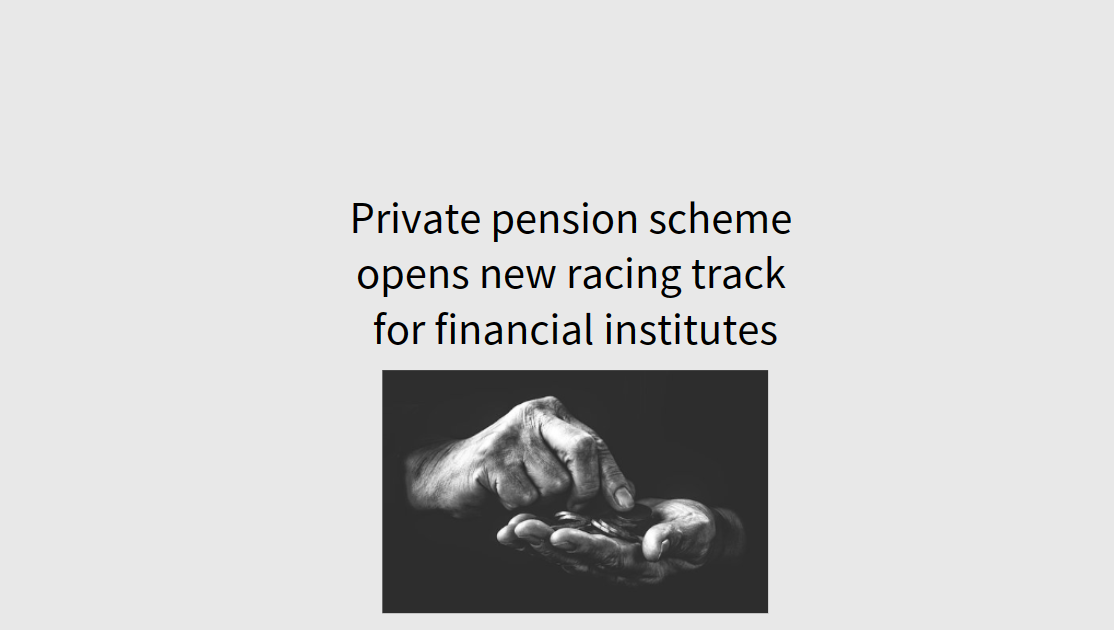

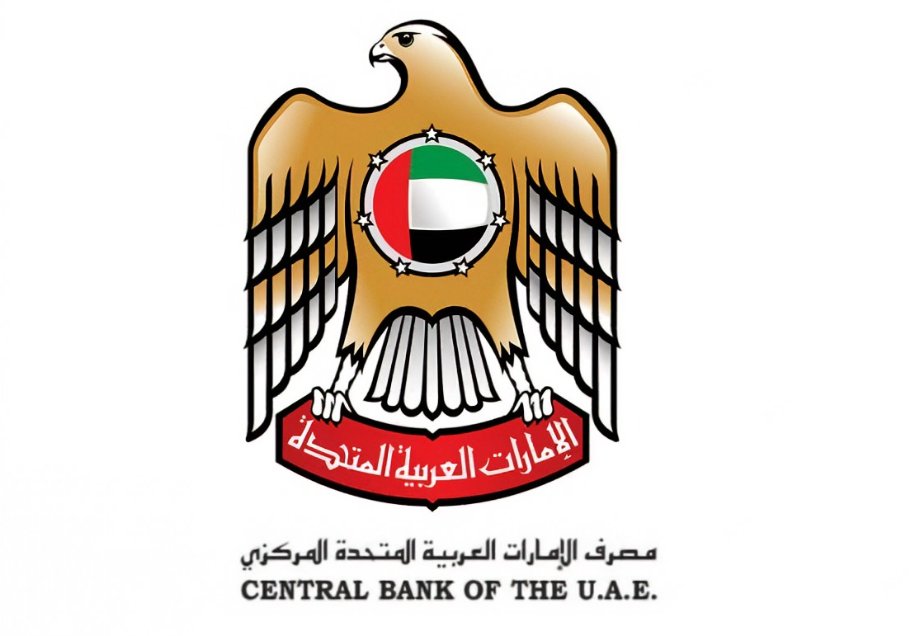
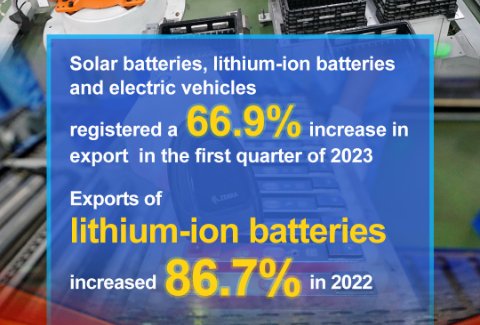



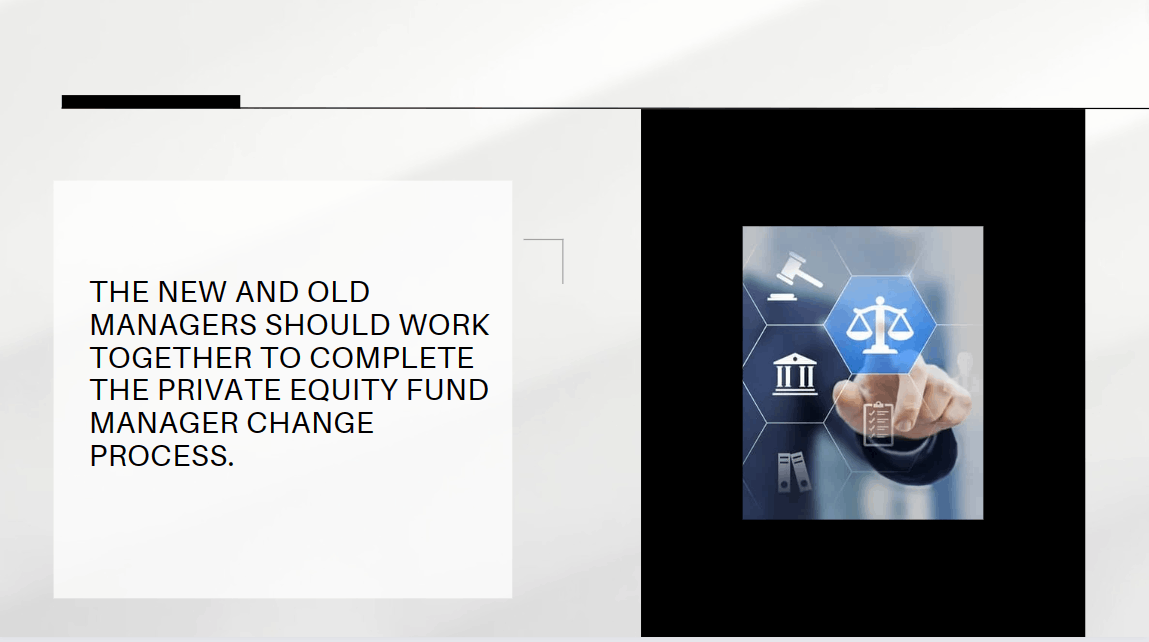
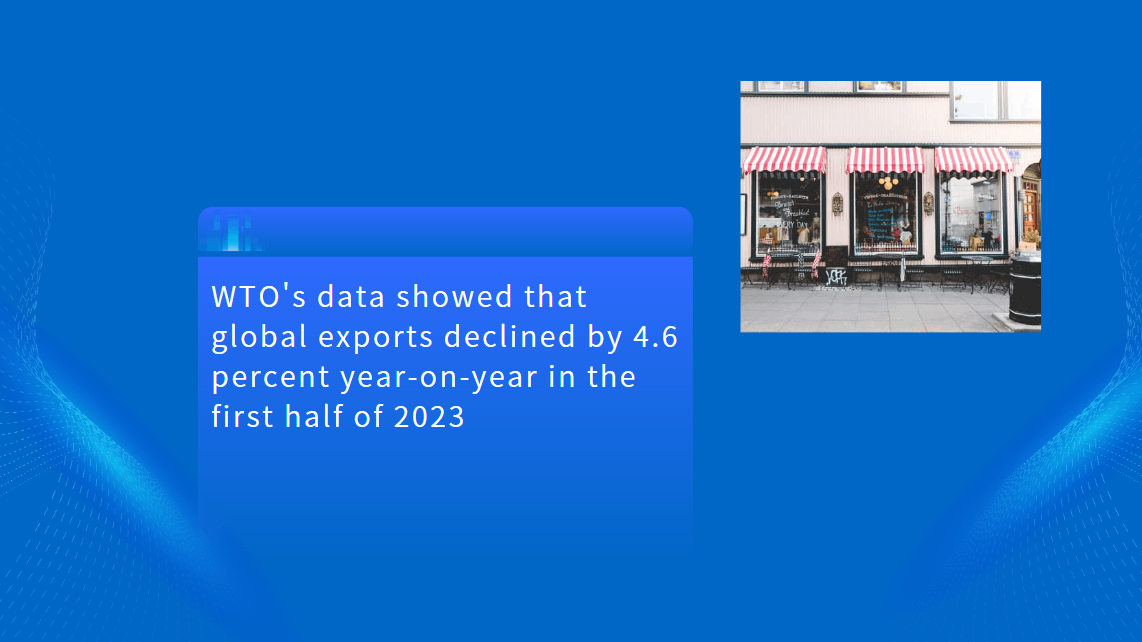


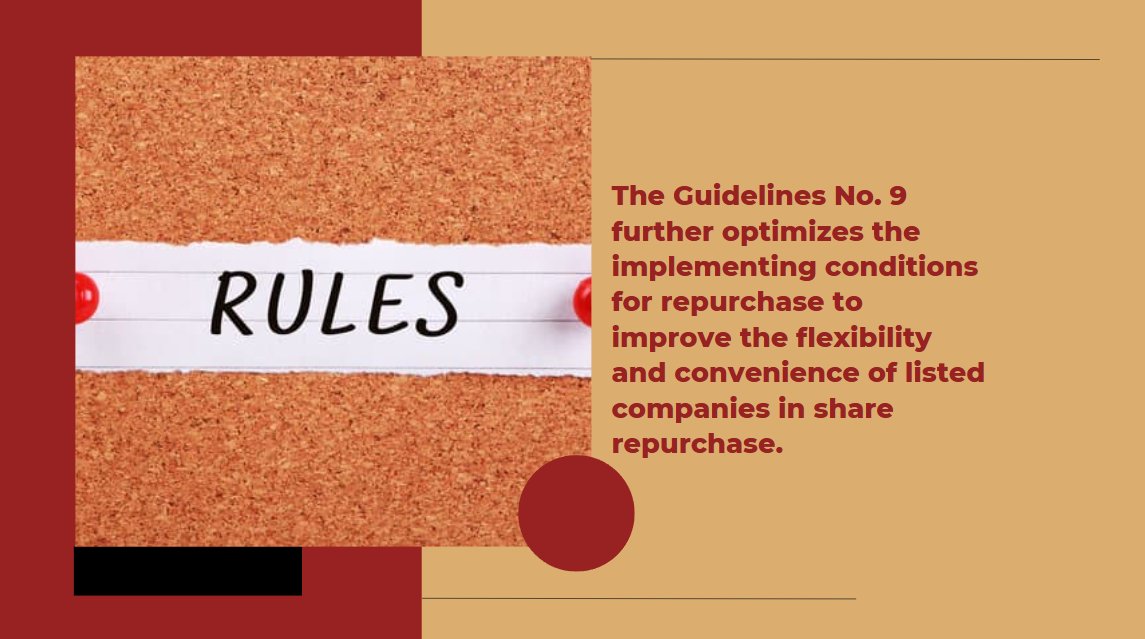

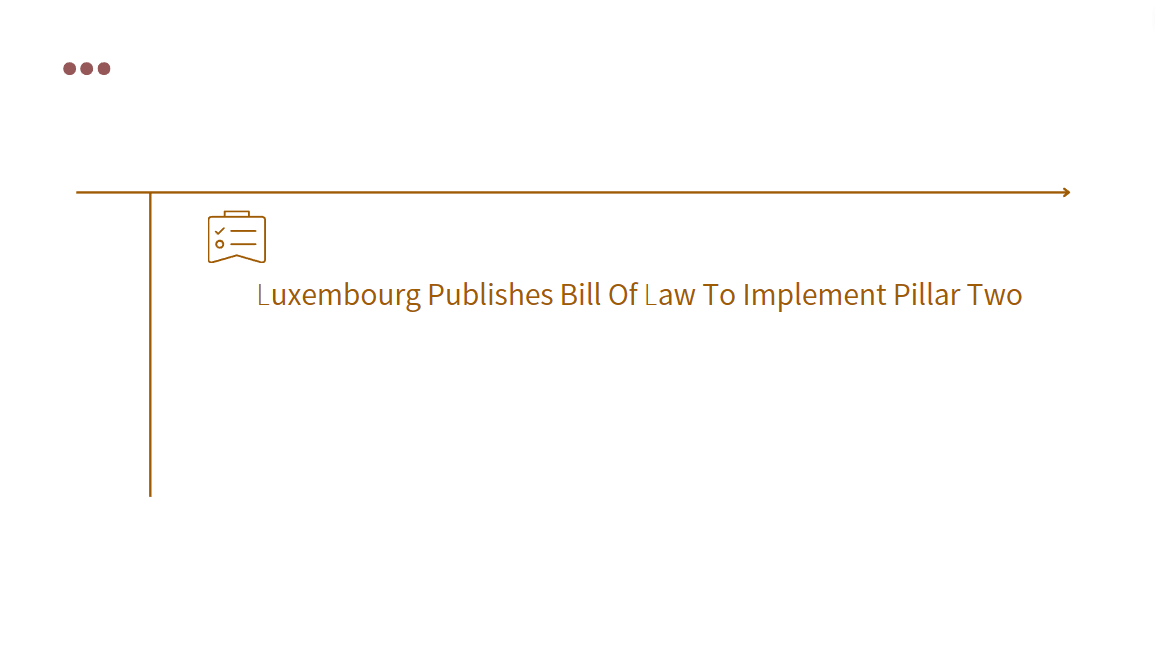

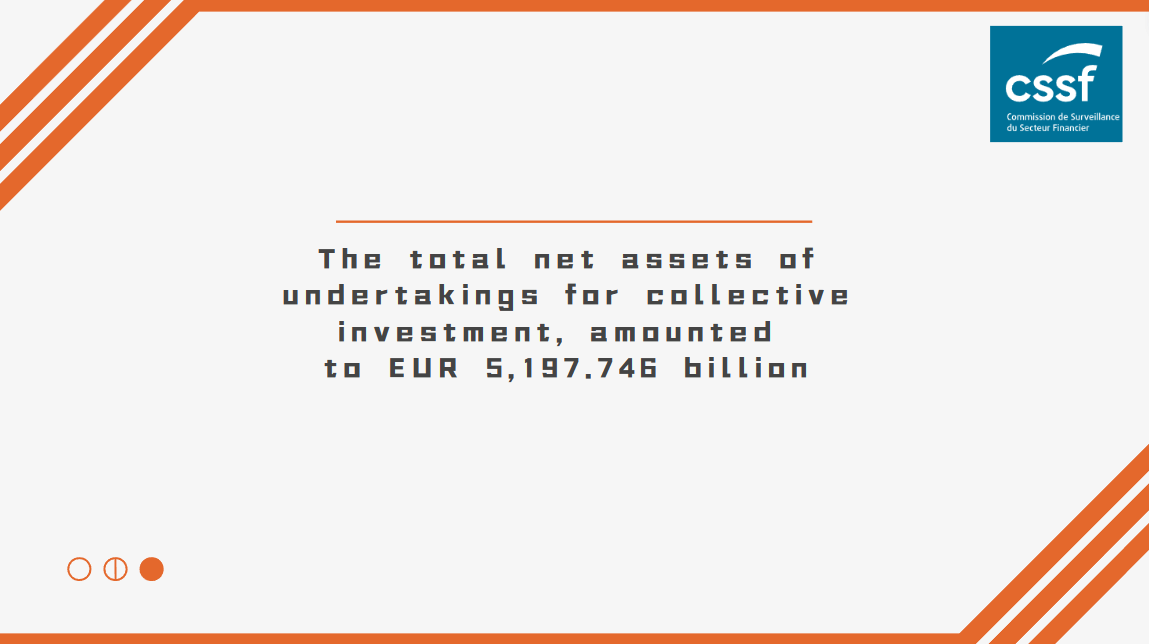




























First, please LoginComment After ~